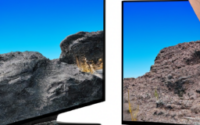**Disk, Drive, Volume, Partition, and Image: A Guide to Their Differences** Disk, drive, volume, partition, and image are all terms that are used to describe different aspects of storage. While they are often used interchangeably, there are actually distinct differences between them. * **Disk** is a physical storage device, such as a hard drive or SSD. * **Drive** is a logical representation of a disk, such as a C: drive or D: drive. * **Volume** is a section of a disk that has been formatted and can be used to store data. * **Partition** is a logical division of a disk that can be used to separate data into different areas. * **Image** is a copy of a disk or volume that can be used to create a backup or to restore data. Here is a table that summarizes the key differences between these terms: | Term | Definition | Example | |—|—|—| | Disk | Physical storage device | Hard drive, SSD | | Drive | Logical representation of a disk | C: drive, D: drive | | Volume | Formatted section of a disk | C: drive, D: drive | | Partition | Logical division of a disk | C: drive, D: drive | | Image | Copy of a disk or volume | Backup, restore | By understanding the differences between these terms, you can better manage your storage devices and keep your data safe.
January 26, 2024
Paid plans only.
Link to the original story: https://www.maketecheasier.com/difference-between-disk-drive-volume-partition-image/

